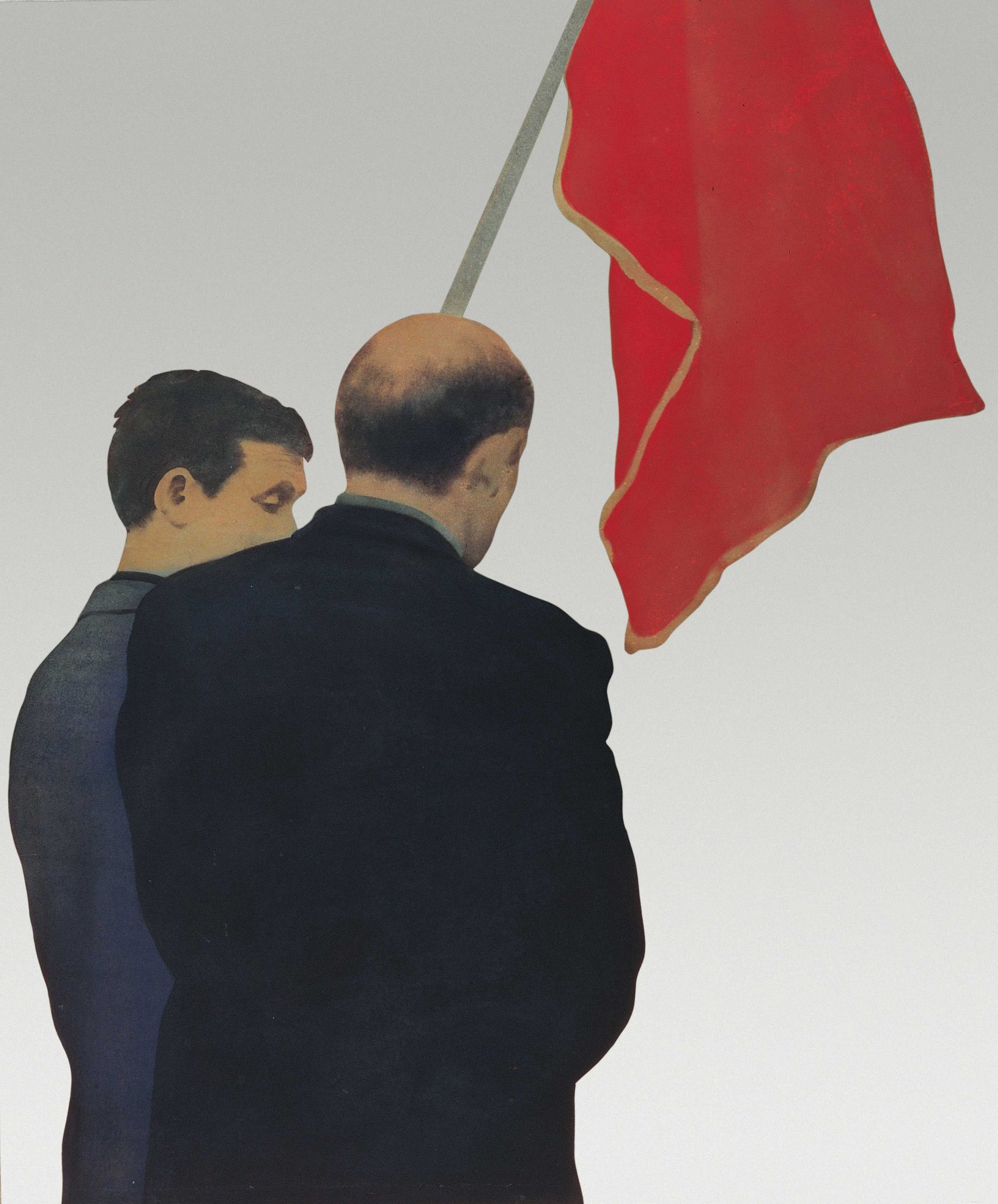The title Pistoletto Politico alerts us that this Michelangelo Pistoletto exhibition will be ‘about politics’, which is practically a truism these days when much significant art wears its politics as a badge of honour. And indeed the seven works on show, six of them mirror works, were all produced during the 1960s and 70s – a particularly turbulent moment in Italian politics, when revolutionary factions began a violent antigovernment campaign. The red flags in Comizio X (1965) and Bandiera Rossa (Comizio I) (1966), and the mirrored prison bars in La Gabbia (1967–74) are obvious political symbols. But it would be wrong to see Pistoletto Politico as just a history lesson – though it is an important reminder of the fervour of the radical left compared to its diminished status today. Nor should we be misled into thinking that these works represent an isolated political moment in Pistoletto’s career.
The work in Pistoletto Politico certainly lends itself to comparisons with the current unstable political situation in Italy. But perhaps the most significant lesson for today’s artists lies in Pistoletto’s prioritisation of aesthetics and the implication of viewer responsibility in political work, in order that it might have meaning beyond its immediate context. Pistoletto is, above all, an advocate for artistic freedom over rigid political agendas. Many artists and politicians would do well to heed his maxim: ‘Be more artistic in your politics and more political in your art.’ The artist’s strong sense of composition is evident in all the works: from the starkly silhouetted, dark-suited figures and close-to-monochrome backgrounds that highlight the red of the flags in the above works, to the sharp cropping of the crouching man repairing a lorry in Uomo Che Aggiusta un Camion (1967), which turns the contours and bold colours into near-abstractions. Pistoletto treats his subjects more as signs on which to project ourselves than as psychologically nuanced individuals.
It is interesting to see Pistoletto’s works in this cosy first-floor gallery space rather than the large museums and biennials that have been the more familiar recent setting, fashionable as he has become with curators and a younger generation of artists. This domesticity gives the work a particularly disconcerting intimacy – the idea (which Martha Rosler also had on the other side of the Atlantic, with her House Beautiful: Bringing the War Home, 1967–72, series) of confronting the bourgeoisie with the brutal reality of street life (or war) in its own domestic space.
Not only are we, the viewers, reflected in the stainless steel of the mirror works, but Pistoletto leaves areas of blank space so that we feel that we have been inserted into the work among the other figures. In the small gallery, the mirror featuring cell bars literally stops us in our tracks and forces us to consider which side of the depicted barrier we are on: prisoner or guard, protester or police? In a more symbolic way, La Gabbia suggests that we are all implicated in society’s struggles and that the gallery offers no special immunity from the outside world; we cannot leave that involvement at the door.
This article was first published in the May 2013 issue.
